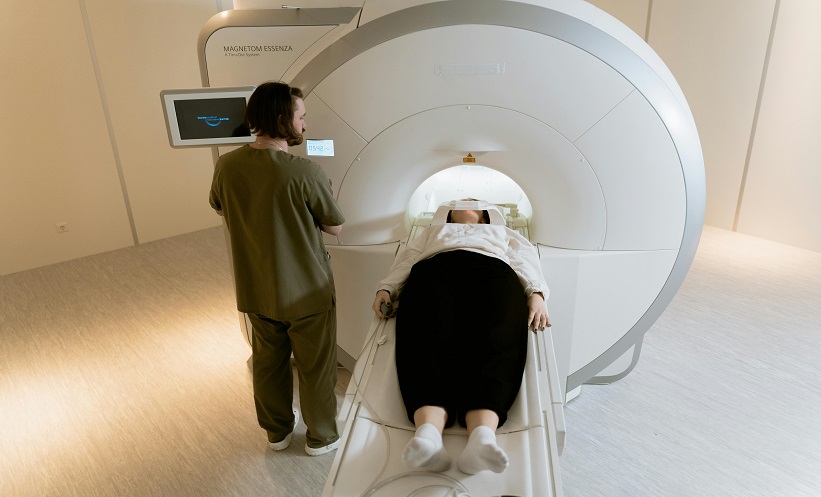Author: Victoria Antoniou, EMJ, London, UK
Citation: EMJ Radiol. 2024;5[1]:15-18. https://doi.org/10.33590/emjradiol/CWOB3604.
![]()
THE EVOLUTION OF INTERVENTIONAL RADIOLOGY
“Interventional radiology is based on the integration of disruptive technologies and disruptive approaches, and [we] need to keep this approach if [we] want to survive.” This was how Gilles Soulez from the University of Montréal, Canada, began his presentation on the evolution of the ever-transforming field which is IR. The work of Charles Dotter, who performed the first angioplasty, and Andreas Grüntzig, who first thought to use a balloon to do so, was discussed, and their revolutionary contributions to IR were acknowledged as a basis for many more decades of innovation.
Soulez went on to discuss multiple other innovative radiologists, and their significant ideas, which have changed how the field operates today. Ideas alone were not their main reason for success, however, emphasised Soulez; successful innovation in IR is the result of the ability to bridge unmet clinical needs, with the conception of a new device. Each of these pioneers used collaborative, transdisciplinary methods in their approach to innovation, utilising biomedical engineering, physics, and surgery, in addition to IR. Experts from various fields collaborating instead of competing is also vital, as are supportive institutions and sheer persistence, explained Soulez.
Whether or not these factors will make up the recipe for success in IR innovation in the future is uncertain, however. More stringent regulations in today’s medical scene mean less room for progression, and the now-mature nature of the once-new imaging capabilities, on which so many innovations were dependent, may result in fewer changes to the field. Soulez anticipated that the next disruptive technologies will stem from the various ‘omics’: genomics, transcriptomics, proteomics, metabolomics, and a range of others.
Consequently, Soulez emphasised the need for change in the industry, so as not to fall behind. He underscored the need to reinvest in imaging, to reach targets, better select patients, and advance technology; pointed out the need for collaboration with basic scientists; and lastly, highlighted the importance of more randomised, cost-efficient studies. Radiotheranostics and radiomics were given as examples of technologies which can go on to evolve in the near future with these approaches, and the potential for developments in drug delivery and simulation for training were explored.
NEW TECHNOLOGIES: WHICH SURGERIES WILL BE REPLACED NEXT?
As IR continues to develop, more procedures are being handled by interventional radiologists. Roberto Luigi Cazzato, Hôpitaux Universitaires de Strasbourg, France, discussed the areas in which IR is taking over surgery in his institution. He began his talk by exploring the latest developments in liver tumour microwave ablation. The goal of this procedure is a large ablation with large safety margins to prevent recurrence of local disease. Today, liver ablations can be achieved with a single antenna working at high power, and the organs around the liver can be protected almost entirely. Larger ablations run the risk of injuring the diaphragm, pericardium, gallbladder, and stomach; however, modern materials allow interventional radiologists to avoid this. To achieve these results, a combination of fluoroscopy and CT guidance is needed, in order to see precisely how far the needle can go in the liver, and to erase any uncertainty throughout the procedure. Furthermore, with this method, multiple lesions can be treated in the same session, and complications such as bleeding can be dealt with immediately. Cazzato emphasised the value of precise angio-CT imaging over conventional CT or ultrasound in procedures like liver ablation, for improved progression-free survival.
Cazzato went on to describe how other procedures, such as cryoablation for kidney tumours and desmoid tumours, have a higher safety profile and better outcomes than other forms of treatment. He highlighted, however, that cryoablation for desmoid tumours often results in both minor and major complications, due to the size of the tumours being treated. Should the tumours be ablated earlier, when they are smaller, the risk of complication would lessen. This is what Cazzato and colleagues are aiming to prove in a Phase II, multicentre, randomised trial, in which patients with these tumours are observed until they start to grow or become symptomatic, when they will be treated with standard treatment (chemotherapy) or cryoablation. Cazzato expressed his hope that cryoablation will have the ability to entirely destroy the tumour, instead of simply stopping the growth, as other therapies do.
With these examples from his own work, Cazzato demonstrated the potential for improvement in IR and interventional oncology, highlighting which surgeries are already being replaced by interventional procedures. He additionally emphasised the importance of remaining clinical as this happens. In his closing remarks, he pointed out that progress happens when radiologists interact with their patients; when patients can speak to their clinicians, and know who is performing their treatment.
THE FUTURE OF TRAINING IN INTERVENTIONAL RADIOLOGY
Development, innovation, and progress are all dependent on the future generations entering the field. Training, therefore, is a vital aspect of IR, and one which will need to adapt and evolve with the technology if radiologists are to keep up. Elif Can, Freiburg University Hospital, Germany, began her presentation on the future of training in IR by pointing out the high mortality rates in hospitals across Europe and the USA due to medical errors. This is especially prevalent in IR, due to the repetitive nature of a radiologist’s work and the steep learning curve that comes with such work. We know, however, that trainees are far more likely to earn actively, remembering 90% of what they do but only 50% of what they hear. In addition to this, effective teamwork, communication, and technical skills are all essential in learning environments.
One way to achieve this in IR is through simulation and virtual reality (VR). Can presented data to support the use of these methods in training, demonstrating that simulation-based training reduces procedure time, improves procedure performance ratings, and reduces errors and complications. Simulation-based training has also been shown to improve the retention of high-level skills in trainees. The same can be said for the use of VR; studies have shown that use of VR amongst training interventional radiologists reduced both major and minor errors, increasing the procedure safety. This was proven across multiple institutions with multiple procedures, including fluoroscopy and angiography.
Financially, VR has proven to be more cost-effective than animal lab training in several cases. The initial costs, however, are still high, and Can pointed out that a potential limitation of using VR in training may be its inaccessibility in resource-limited settings. Moreover, the lack of realism may be a cause of doubt, as VR may not completely mimic the physical experience of being in an operating room. The quality of the simulations and VR used in different institutions may also vary, which would significantly impact training. Many have pointed out that, although VR aids the clinician in learning technical skills, it could lead to neglect of other aspects of practice, such as interpersonal skills. Lastly, Can pointed out that there is also a reluctance to moving over to a new, VR-based model of training in many university hospitals, as a result of the long-standing traditions and bureaucracy in medical training.
Ultimately, Can emphasised the effectiveness and benefits of simulation and VR in IR training, at the same time acknowledging their drawbacks and challenges. She concluded her talk by stressing the need for further research and continuous improvement in these technologies, as they have great potential to help with the future of training new radiologists.
FINAL REMARKS AND QUESTIONS
This illuminating session drew to a close with a panel discussion where the speakers answered questions and discussed the future of education, the applications of AI in the field and why ‘AI’ may be too vague a term, as well as the implementations of robotics today and in the future.







